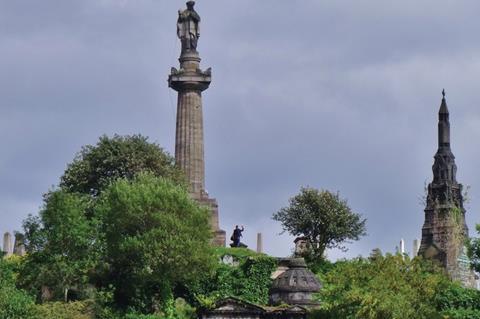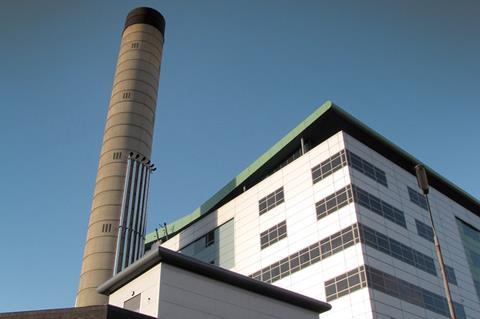Paul Stallan is enlivened by Glasgow’s necropolis, whose 50,000 inhabitants enjoy a fine view of the city. But the same town’s Royal Infirmary leaves him cold

Glasgow’s necropolis is my architectural wonder.
A 19th-century burial place where the dead have a view over the entire city remains a profound concept and a spectacular piece of townscape. Over 50,000 burials have taken place at the necropolis and most of the 3,500 tombs have been constructed up to 14ft deep, with stone walls and brick partitions. On the top of the necropolis, tombs were blasted out of the rockface.
There are monuments here designed by major architects and sculptors of the time, including Alexander “Greek” Thomson and Charles Rennie Macintosh in every architectural style, created for the prominent and wealthy entrepreneurs of the Second City of the Empire.
The Necropolis has an extraordinary atmosphere and for me has parallels with Enric Miralles’ Igualada Cemetery in Barcelona, widely regarded as one of the most poetic works of the 20th century.
Necropolis, literally meaning “city of the dead”, might have been an inspiration for Brad Pitt, who spent a month filming World War Z in Glasgow. Check out the WWZ tailer on YouTube to see George Square full of zombies … a typical Friday night after the pubs shut, really.
On a life and death theme Glasgow Royal Infirmary’s maternity hospital is a massive carbuncle that happens to sit alongside the necropolis. The story goes that the building’s massive metal gull wing roof form was meant to resemble a gigantic stork delivering babies to the hospital.
This building is a prime example of what the architect Robert Venturi called Duck architecture named after the crazy roadside diners in America that were in fact giant inhabited signs. All the more unfortunate is that the building is like a huge haemorrhoid attached to the backside of the main hospital building designed by Sir Basil Spence.
Cheap healthcare architecture juxtaposed with timeless deathcare architecture - both need 21st-century reinvention to bring greater significance to the cycle of life celebration … unless you are a zombie, that is.
Paul Stallan is design director at Stallan-Brand
WONDER

The Glasgow Necropolis - the “city of the dead” - is a Victorian cemetery on a prominent hill in the city. It opened in 1833, a year after a 1832 change in the law allowed burial for profit, in light of a growing population and fewer people attending church. It contains tombs designed by famous architects of the time.
BLUNDER

The Princess Royal Maternity Hospital stands next to the Glasgow Royal Infirmary on Alexandra Parade in Glasgow. It opened in 2001, after the closure of the Rutherglen Maternity Hospital and the Glasgow Royal Maternity Hospital.




























1 Readers' comment